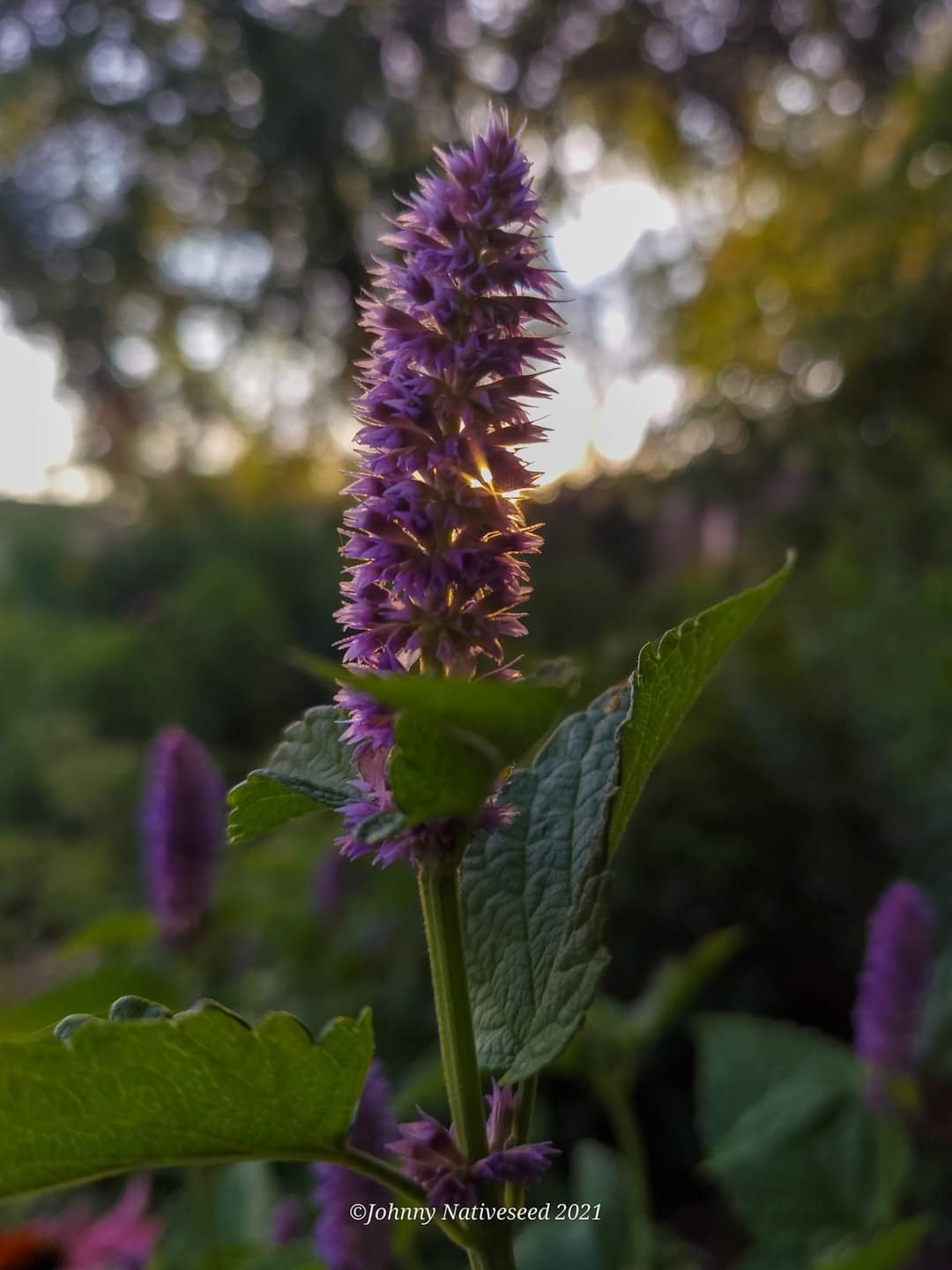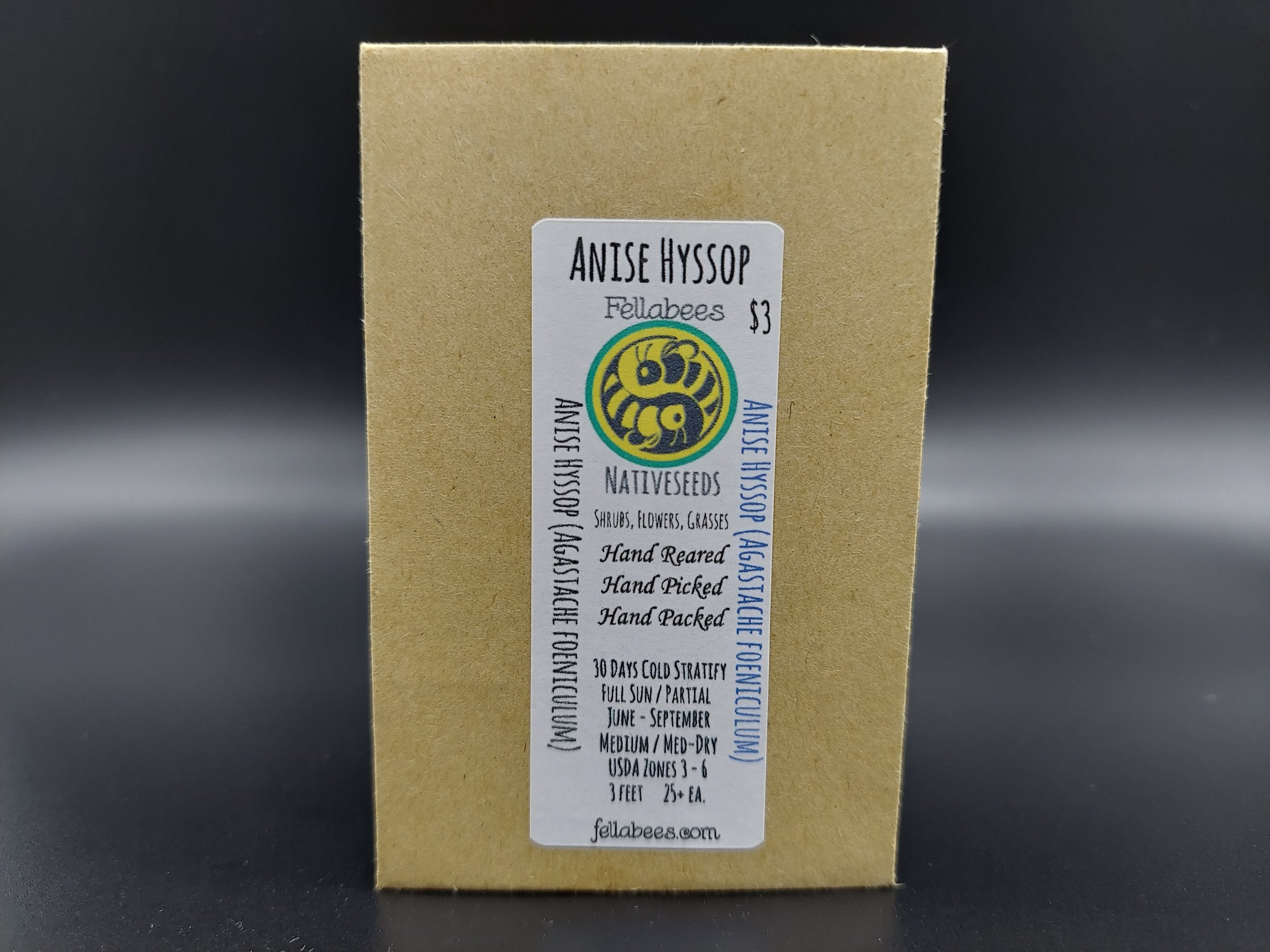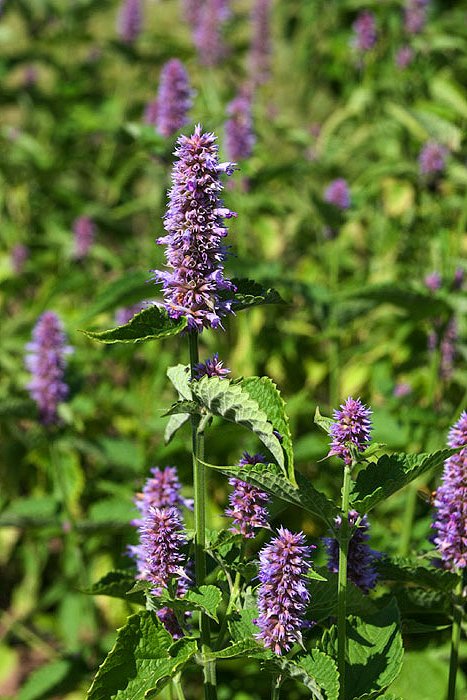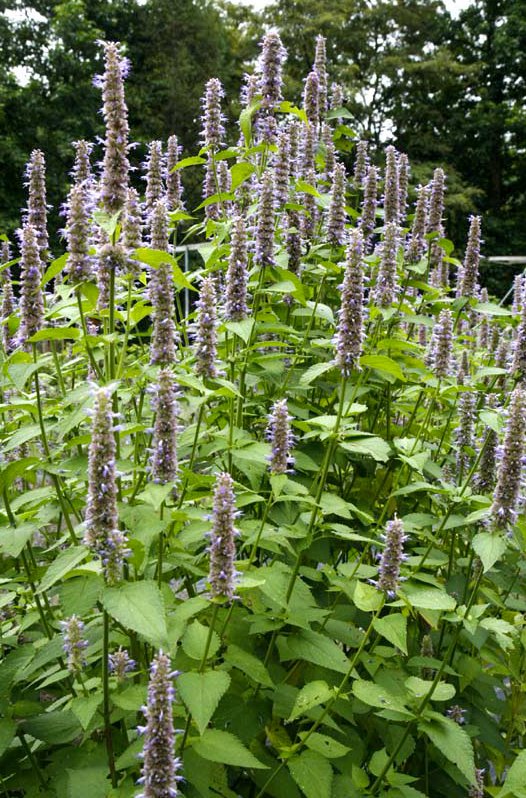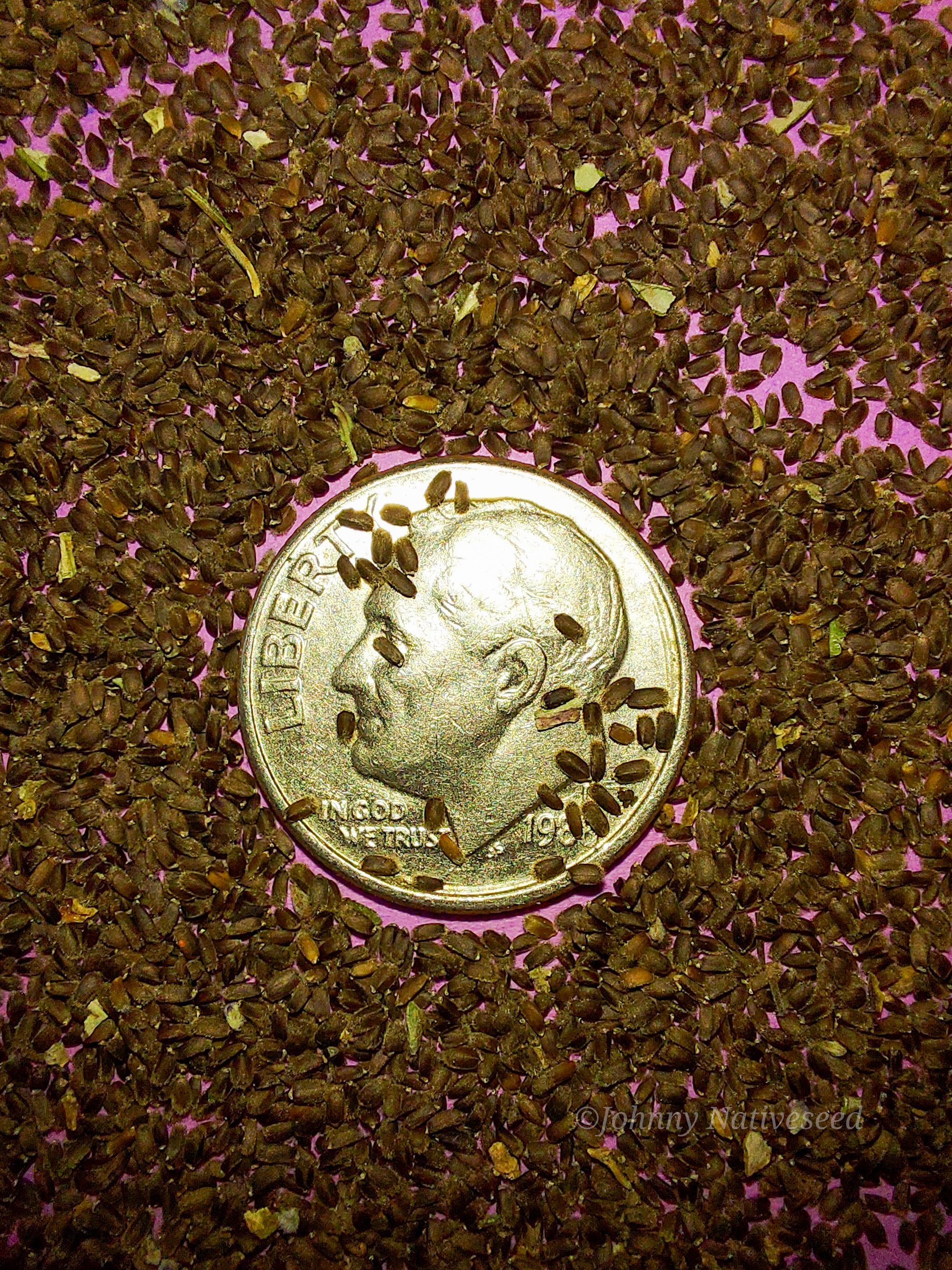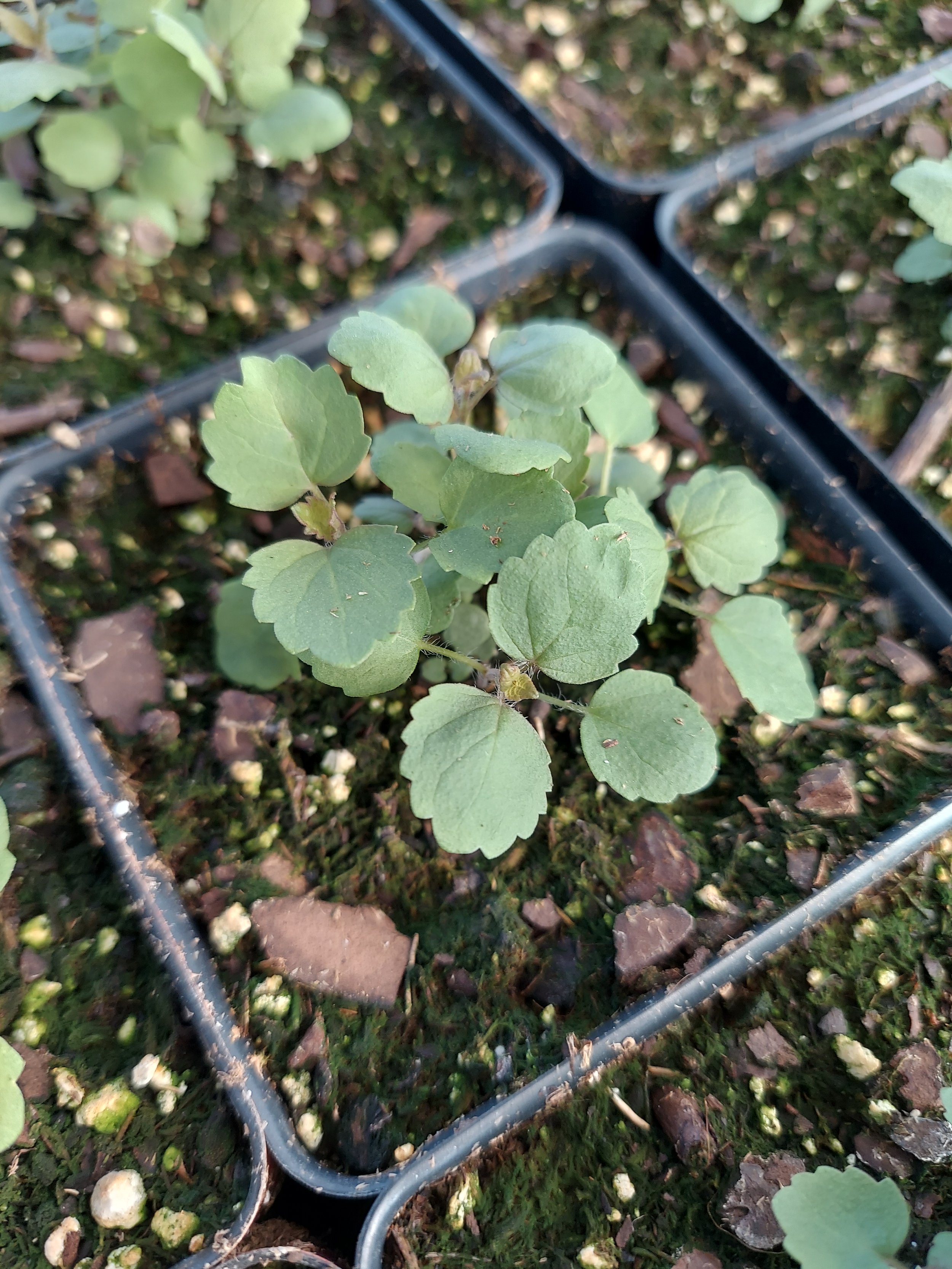Anise Hyssop (Agastache foeniculum)
Anise Hyssop (Agastache foeniculum)
Agastache foeniculum is the scientific name for the native plant commonly called Anise Hyssop, Blue Giant Hyssop, Fragrant Giant Hyssop, or the Lavender Giant Hyssop.
Anise Hyssop is a species of perennial plant in the Lamiaceae (mint) family. This plant is native to much of north-central and northern North America, notably the Great Plains and other prairies.
It is tolerant of deer and drought, and also attracts hummingbirds, butterflies, bumblebees, sweat bees, carpenter bees, and night flying moths.
Anise Hyssop is in the same family as Hyssop (the mint family Lamiaceae), but they are not closely related. The Hyssop (Hyssopus) is a genus of about 10–12 species of herbaceous or semi-woody plants native from the east Mediterranean to central Asia.
This species grows from 2 feet to 4 feet tall and 1 foot wide, in a clump-like, upright shape, with flowers appearing in showy verticillasters, or false whorls, and occasionally branching at the apex.
The leaves have an oval, toothed shape with a white tint underneath. The plant blooms from June into September with bright lavender flowers that become more colorful near the tip. One plant may produce as many as 90,000 individual flowers. The root system produces a taproot. This plant is known to be receptive to cloning via cuttings. (However, growing from seed assures wider diversity)
Anise hyssop was used medicinally by Indigenous Tribes for cough, fevers, wounds, and diarrhea. The soft, anise-scented leaves are still used as a seasoning, as a tea, in potpourri, and can be crumbled in salad.
This species is considered present but rare in several counties of the states of Iowa, Nebraska, and Colorado.
Plant Details
USDA Zones: 4-8
Germination Needs: 30 Days Cold Stratification, Seed is very small and likes soil contact and a view of the light to germinate. Surface sow and do not cover with more than a dusting if any soil. Keep moist until germination but not soaking, if growing in trays water from the bottom only.
Life Cycle: Perennial
Sun Exposure: Full to Partial
Soil Moisture: Medium, Medium-Dry
Plant Spacing: 1-1½ feet
Height: 3 feet
Bloom time: June, July, August, September
Bloom Color: Purple
Advantages
Pollinator Favorite: butterflies, moths, bees, wasps, beetles
Bird Favorite: seeds, insects, fruit, nectar, nesting, perchs.
Deer Resistant: Yes
Excellent in the home landscape!
Native to: Wisconsin, Minnesota, Iowa, Illinois, Michigan, Pennsylvania, New Hampshire, Rhode Island, Connecticut, Delaware, New Jersey, Alabama, Kentucky, Nebraska, South Dakota, North Dakota, Montana, Wyoming, and Colorado.
.
.
Packet quantities:
We pride ourselves on ethical, hands on, ecological management, using no mechanical or chemical methods whatsoever.
All of our native seed is hand reared, hand picked, and hand packed from native prairies under our exclusive management, never breaking chain of custody from the field until it is sent to you. Each packet is hand prepared for shipment by us, directly.
Small seed species will contain greater than 20-25 seed
Large seed species will contain greater than 10-15 seed
It is our mission to spread the wealth of native plant and pollinator ecological sustainability, and educate back yard gardeners as well as corporate and government entities in how to germinate, grow, and benefit from native synergies.
Thank you for your support, it is because of you, that we can grow together to do, what we do.🐛🦋🐝🐞🌾🌱🌼🧡
Anise Hyssop (Agastache foeniculum)
Agastache foeniculum is the scientific name for the native plant commonly called Anise Hyssop, Blue Giant Hyssop, Fragrant Giant Hyssop, or the Lavender Giant Hyssop.
Anise Hyssop is a species of perennial plant in the Lamiaceae (mint) family. This plant is native to much of north-central and northern North America, notably the Great Plains and other prairies.
It is tolerant of deer and drought, and also attracts hummingbirds, butterflies, bumblebees, sweat bees, carpenter bees, and night flying moths.
Anise Hyssop is in the same family as Hyssop (the mint family Lamiaceae), but they are not closely related. The Hyssop (Hyssopus) is a genus of about 10–12 species of herbaceous or semi-woody plants native from the east Mediterranean to central Asia.
This species grows from 2 feet to 4 feet tall and 1 foot wide, in a clump-like, upright shape, with flowers appearing in showy verticillasters, or false whorls, and occasionally branching at the apex.
The leaves have an oval, toothed shape with a white tint underneath. The plant blooms from June into September with bright lavender flowers that become more colorful near the tip. One plant may produce as many as 90,000 individual flowers. The root system produces a taproot. This plant is known to be receptive to cloning via cuttings. (However, growing from seed assures wider diversity)
Anise hyssop was used medicinally by Indigenous Tribes for cough, fevers, wounds, and diarrhea. The soft, anise-scented leaves are still used as a seasoning, as a tea, in potpourri, and can be crumbled in salad.
This species is considered present but rare in several counties of the states of Iowa, Nebraska, and Colorado.
Plant Details
USDA Zones: 4-8
Germination Needs: 30 Days Cold Stratification, Seed is very small and likes soil contact and a view of the light to germinate. Surface sow and do not cover with more than a dusting if any soil. Keep moist until germination but not soaking, if growing in trays water from the bottom only.
Life Cycle: Perennial
Sun Exposure: Full to Partial
Soil Moisture: Medium, Medium-Dry
Plant Spacing: 1-1½ feet
Height: 3 feet
Bloom time: June, July, August, September
Bloom Color: Purple
Advantages
Pollinator Favorite: butterflies, moths, bees, wasps, beetles
Bird Favorite: seeds, insects, fruit, nectar, nesting, perchs.
Deer Resistant: Yes
Excellent in the home landscape!
Native to: Wisconsin, Minnesota, Iowa, Illinois, Michigan, Pennsylvania, New Hampshire, Rhode Island, Connecticut, Delaware, New Jersey, Alabama, Kentucky, Nebraska, South Dakota, North Dakota, Montana, Wyoming, and Colorado.
.
.
Packet quantities:
We pride ourselves on ethical, hands on, ecological management, using no mechanical or chemical methods whatsoever.
All of our native seed is hand reared, hand picked, and hand packed from native prairies under our exclusive management, never breaking chain of custody from the field until it is sent to you. Each packet is hand prepared for shipment by us, directly.
Small seed species will contain greater than 20-25 seed
Large seed species will contain greater than 10-15 seed
It is our mission to spread the wealth of native plant and pollinator ecological sustainability, and educate back yard gardeners as well as corporate and government entities in how to germinate, grow, and benefit from native synergies.
Thank you for your support, it is because of you, that we can grow together to do, what we do.🐛🦋🐝🐞🌾🌱🌼🧡
Anise Hyssop (Agastache foeniculum)
Agastache foeniculum is the scientific name for the native plant commonly called Anise Hyssop, Blue Giant Hyssop, Fragrant Giant Hyssop, or the Lavender Giant Hyssop.
Anise Hyssop is a species of perennial plant in the Lamiaceae (mint) family. This plant is native to much of north-central and northern North America, notably the Great Plains and other prairies.
It is tolerant of deer and drought, and also attracts hummingbirds, butterflies, bumblebees, sweat bees, carpenter bees, and night flying moths.
Anise Hyssop is in the same family as Hyssop (the mint family Lamiaceae), but they are not closely related. The Hyssop (Hyssopus) is a genus of about 10–12 species of herbaceous or semi-woody plants native from the east Mediterranean to central Asia.
This species grows from 2 feet to 4 feet tall and 1 foot wide, in a clump-like, upright shape, with flowers appearing in showy verticillasters, or false whorls, and occasionally branching at the apex.
The leaves have an oval, toothed shape with a white tint underneath. The plant blooms from June into September with bright lavender flowers that become more colorful near the tip. One plant may produce as many as 90,000 individual flowers. The root system produces a taproot. This plant is known to be receptive to cloning via cuttings. (However, growing from seed assures wider diversity)
Anise hyssop was used medicinally by Indigenous Tribes for cough, fevers, wounds, and diarrhea. The soft, anise-scented leaves are still used as a seasoning, as a tea, in potpourri, and can be crumbled in salad.
This species is considered present but rare in several counties of the states of Iowa, Nebraska, and Colorado.
Plant Details
USDA Zones: 4-8
Germination Needs: 30 Days Cold Stratification, Seed is very small and likes soil contact and a view of the light to germinate. Surface sow and do not cover with more than a dusting if any soil. Keep moist until germination but not soaking, if growing in trays water from the bottom only.
Life Cycle: Perennial
Sun Exposure: Full to Partial
Soil Moisture: Medium, Medium-Dry
Plant Spacing: 1-1½ feet
Height: 3 feet
Bloom time: June, July, August, September
Bloom Color: Purple
Advantages
Pollinator Favorite: butterflies, moths, bees, wasps, beetles
Bird Favorite: seeds, insects, fruit, nectar, nesting, perchs.
Deer Resistant: Yes
Excellent in the home landscape!
Native to: Wisconsin, Minnesota, Iowa, Illinois, Michigan, Pennsylvania, New Hampshire, Rhode Island, Connecticut, Delaware, New Jersey, Alabama, Kentucky, Nebraska, South Dakota, North Dakota, Montana, Wyoming, and Colorado.
.
.
Packet quantities:
We pride ourselves on ethical, hands on, ecological management, using no mechanical or chemical methods whatsoever.
All of our native seed is hand reared, hand picked, and hand packed from native prairies under our exclusive management, never breaking chain of custody from the field until it is sent to you. Each packet is hand prepared for shipment by us, directly.
Small seed species will contain greater than 20-25 seed
Large seed species will contain greater than 10-15 seed
It is our mission to spread the wealth of native plant and pollinator ecological sustainability, and educate back yard gardeners as well as corporate and government entities in how to germinate, grow, and benefit from native synergies.
Thank you for your support, it is because of you, that we can grow together to do, what we do.🐛🦋🐝🐞🌾🌱🌼🧡

